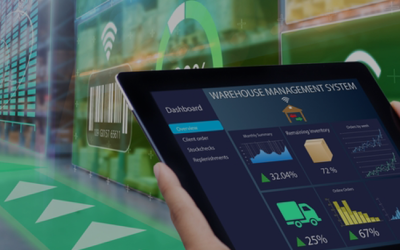A prediction that won’t go wrong: Supply Chain Risk Manager set to become a formal role in the post-COVID-19 era
As the impact of COVID-19 unfolds it is becoming agonizingly obvious that most supply chain organizations do not have a clear contingency plan in place. One HBR article was brutal in its assessment of supply chains saying that “the vast majority of global companies have no idea of what their risk exposure to what is going on in Asia actually is.”1 But the problem is more widespread than the risks emanating from Asia. One recent survey found that only 24% of respondents had quantified their top 10 risks and 10% said they have no formalized process in place to identify risks.2 This points to a dangerously wide gulf in risk management, explaining why organizations find themselves in their predicament.
The phenomenon is not new. We have witnessed disruptions in the past upsetting the supply chain rhythm and creating disruptions of extreme orders. In these times, two fundamental capabilities mark out great supply chains – Supply Chain Risk Monitoring and Supply Chain Resilience. The first capability is about identifying risks that can disrupt supply chain operations and assumes significance given the global spread of consumer markets and supply chains. The second is all about rapid Time to Recover (TTR), minimizing the disruptive impact if that happens.
The risks we are accustomed to are evident enough: geo-political shifts, cross border restrictions, economic imbalances, terrorism, industrial disruptions, regulatory changes, recalls, natural disasters, etc. But organizations are not accustomed to a risk that brings large portions of the world to a halt.
As of 24 March, 20 nations had either been though a complete lockdown or were experiencing one3. Who could have foreseen such a situation? More important, supply chain practitioners have historically been trained (quite rightly) to bring all their attention and energy to supply chain optimization and cost reductions. This has left little maneuvering room if something like a global pandemic occurs.
It is for this very reason that the time has come for organizations to consider a formal Operational Risk Management framework in supply chains, much like banks created a decade or so ago. While the supply chain function and practitioners have a great idea of what could go wrong and the risks they carry, seldom do we see a formal capability in this area that exist vis-à-vis people, processes and tools. It is imperative that larger supply chain organizations create formal structures and fix responsibilities with named individuals that provide a view into potential risks and disruptions. They are also mandated to devise risk management strategies that build supply chain resilience. If there is a learning we can take from the COVID-19 disaster, it is this: The time has come to have a role called Supply Chain Risk Officer in most large global supply chains.











